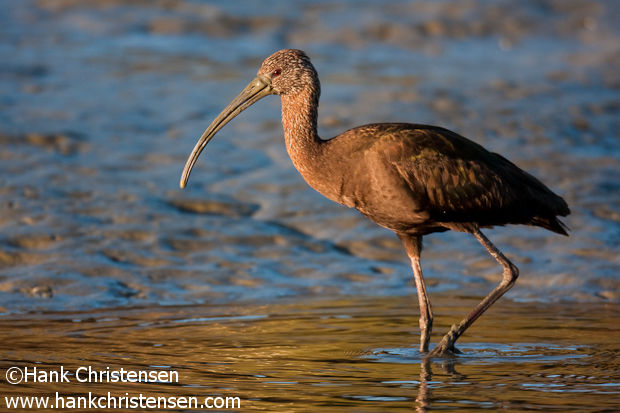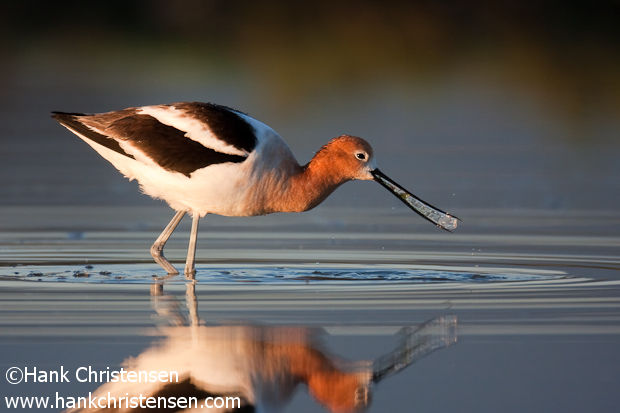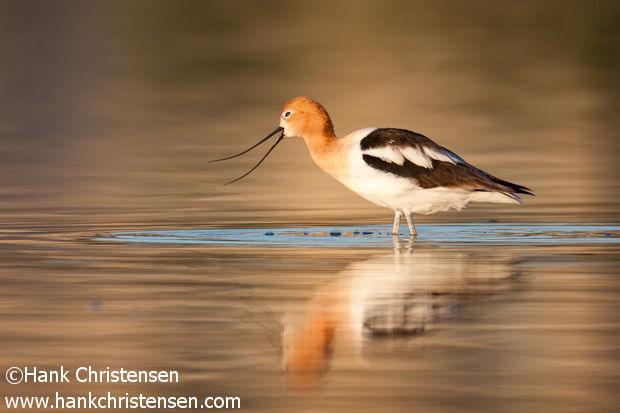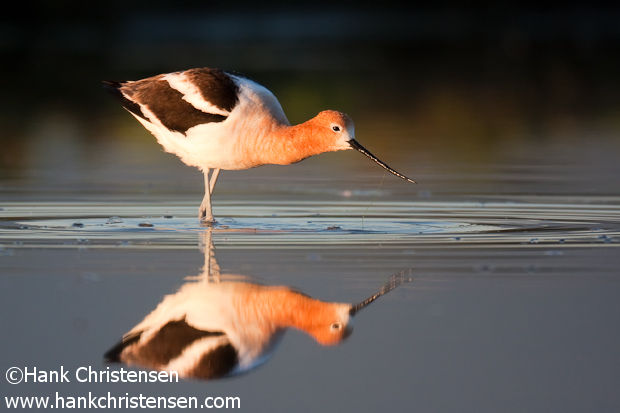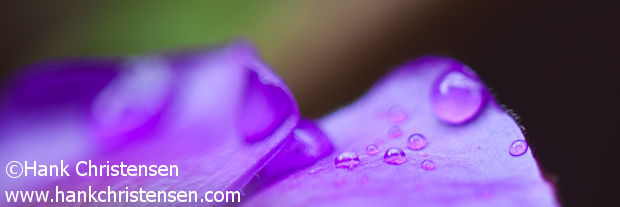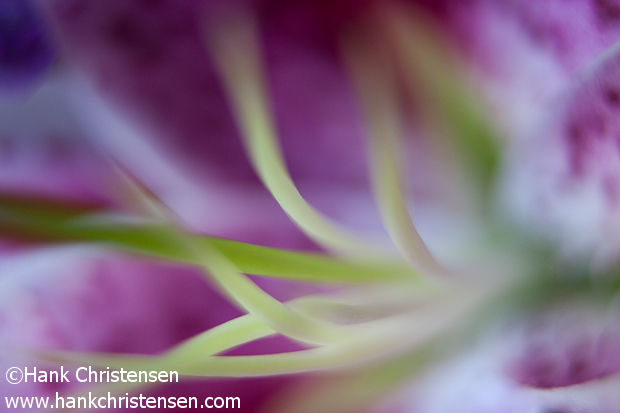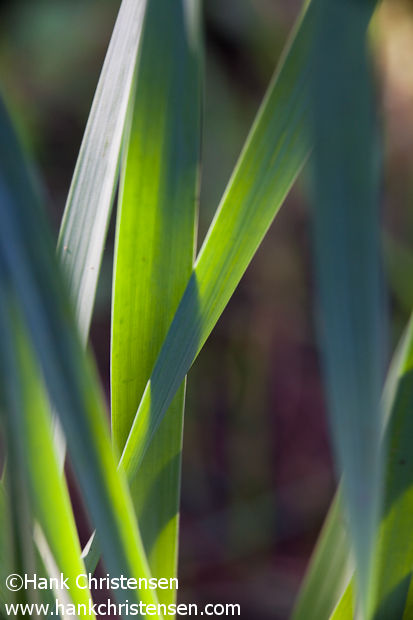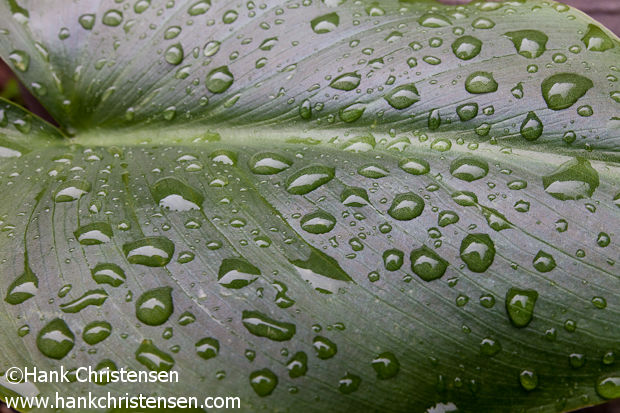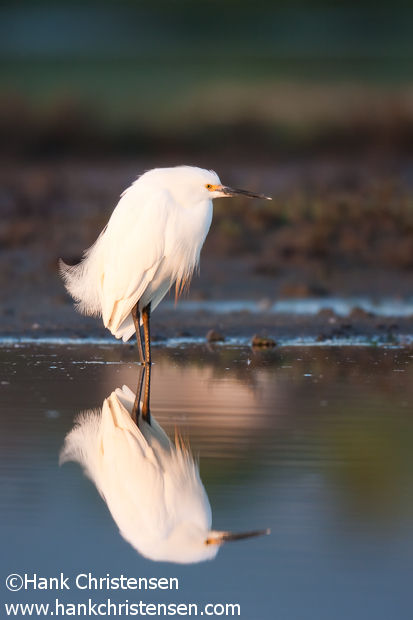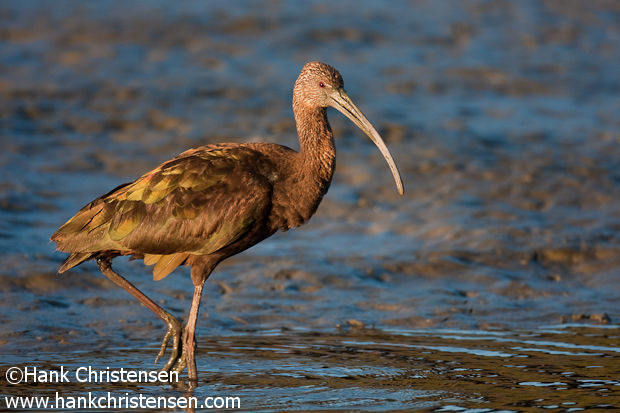
A few weeks ago I was at Baylands in Palo Alto, photographing at sunset. I was hoping to catch a glimpse of a white-faced ibis, which I had seen several weeks before, but only briefly. This bird is a rarity in the area, and seldom emerges from the pickleweed, choosing to hide in the wetland vegetation. However, a pair have been spotted in the Palo Alto and Mountain View area more regularly since January of this year, and up to three have been seen intermittently over the last few years. Whether this is a migratory aberration, or more likely a few year-round rogues, it is exciting to see one up close.
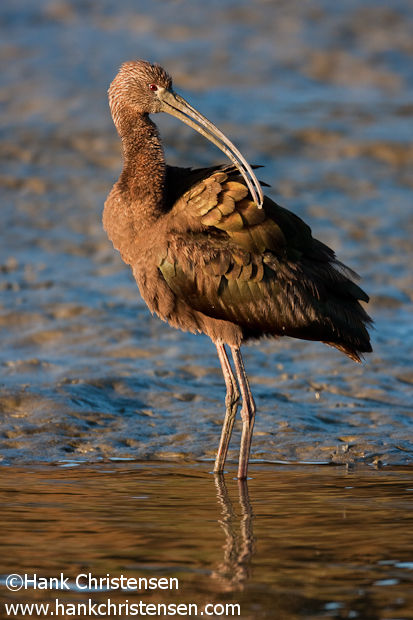
This specimen does not follow the normal head plumage that give the white-faced ibis its name, but is an alternate of the same species. Its iridescent bronze-brown feathers glow in the sunlight. I was very lucky on this day to see the ibis out in the open, fishing along a slough just as the sun was setting behind me.
I almost missed it however – as I was packing up my gear for the day, I saw another photographer with a large lens speed-walking toward a slough with open views. I hoped that the thing that had caused this rare burst of speed was the very bird I was looking for. I decided the effort was worth the chance, and unpacked my gear to follow him. I was happily rewarded when I saw the ibis poking through the mud, in gorgeous evening light. I had about five minutes with the bird before it was spooked by passerby’s and flew off for the day.
